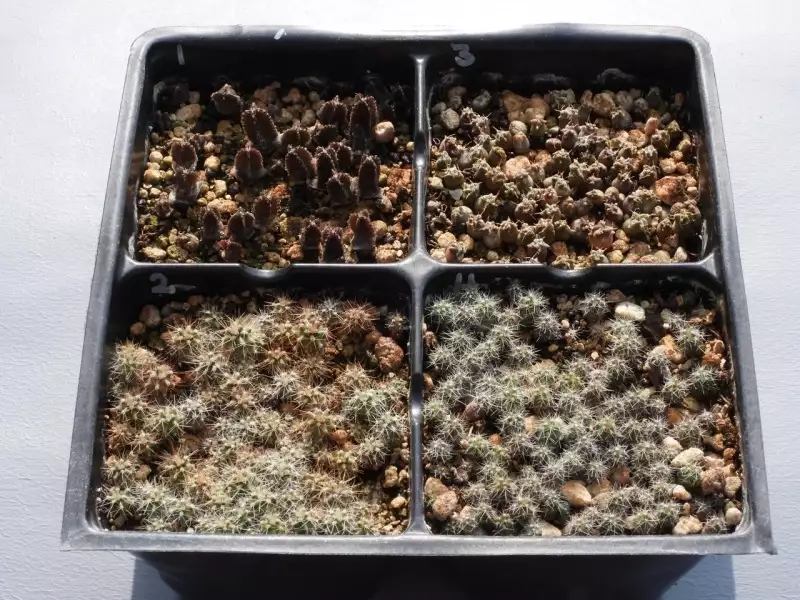
|
July 11, 2020 sowing Set 4
Peniocereus greggii SNL1 (50) max germination count = 32 Count Sept 19 = 34 Astrophytum capricorne (100) max germination count = 89 Count Sept 19 = 90 (95)
Echinocereus triglochidiatus (150) max germination count = 66 Count Sept 19 = 93 (94) Escobaria missouriensis SNL155 (150) max germination count = 88 Count Sept 19 = 104 (106)
Two weeks later. You can now see the plants diverging in size. This is easiest to see in the cell (#1) having the Peniocereus greggii. I included those seeds in this demo because I wanted a species that was tall, so that size difference would be easy to see. If you look carefully at the other species, the size difference is noticeable. It's the most difficult to see among tha Astriphytum capricorne. The three numbers in parentheses are an accidental check on my counting technique. I stopped counting after this set and came back later to count. I thought I was counting Set 5, but it was Set 4 (not so for the plants in this Cell 1). Since I'm just eye-ball free winging the counting, this is remarkably good agreement. I'm not always this good. When I do serious counting, I use a transparent grid, or other aids, to help me keep better track of where I am. All the plants in a cell tend to look alike and they're randomly placed, so keeping track is challenging. Incidentally, all science begins with counting. If you can't count something, it's hard, maybe impossible, to call whatever you're doing science. It's not true that counting is always science. Usually, counting is counting.